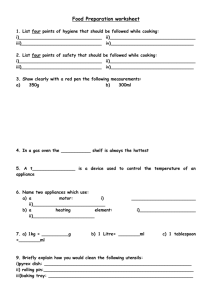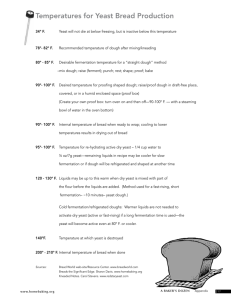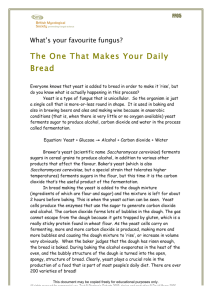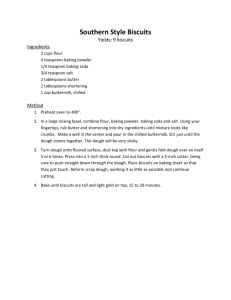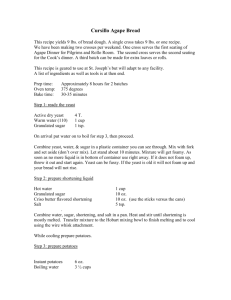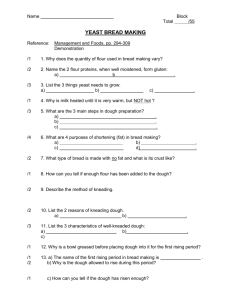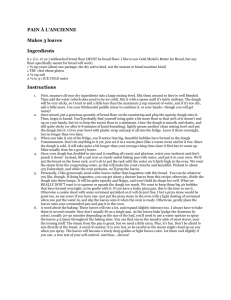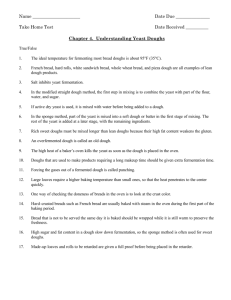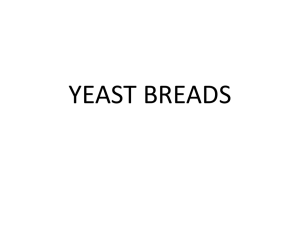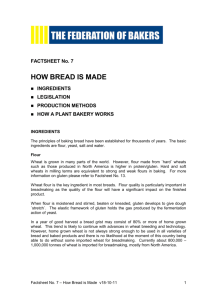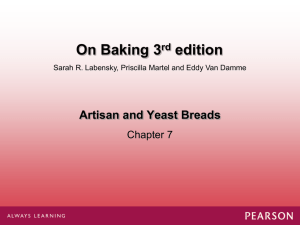What Happened to the Yeast Bread?
advertisement
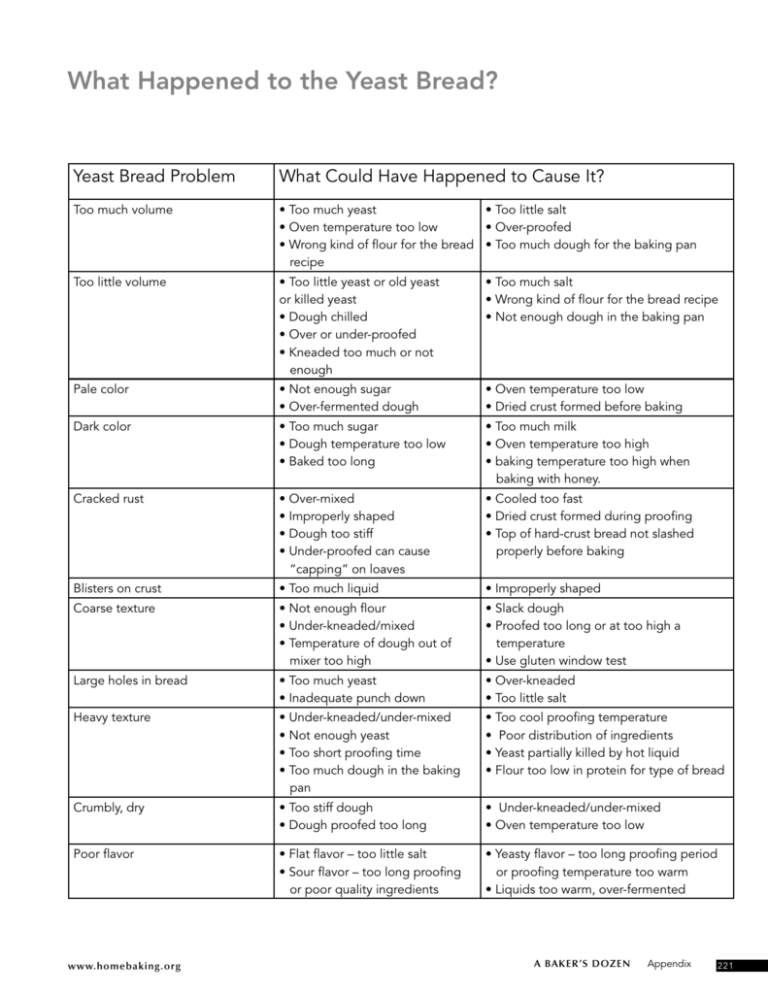
What Happened to the Yeast Bread? Yeast Bread Problem What Could Have Happened to Cause It? Too much volume • Too much yeast • Too little salt • Oven temperature too low • Over-proofed • Wrong kind of flour for the bread • Too much dough for the baking pan recipe Too little volume • Too little yeast or old yeast or killed yeast • Dough chilled • Over or under-proofed • Kneaded too much or not enough • Too much salt • Wrong kind of flour for the bread recipe • Not enough dough in the baking pan Pale color • Not enough sugar • Over-fermented dough • Oven temperature too low • Dried crust formed before baking Dark color • Too much sugar • Dough temperature too low • Baked too long • Too much milk • Oven temperature too high • baking temperature too high when baking with honey. Cracked rust • Over-mixed • Improperly shaped • Dough too stiff • Under-proofed can cause “capping” on loaves • Cooled too fast • Dried crust formed during proofing • Top of hard-crust bread not slashed properly before baking Blisters on crust • Too much liquid • Improperly shaped Coarse texture • Not enough flour • Under-kneaded/mixed • Temperature of dough out of mixer too high • Slack dough • Proofed too long or at too high a temperature • Use gluten window test Large holes in bread • Too much yeast • Inadequate punch down • Over-kneaded • Too little salt Heavy texture • Under-kneaded/under-mixed • Not enough yeast • Too short proofing time • Too much dough in the baking pan • Too cool proofing temperature • Poor distribution of ingredients • Yeast partially killed by hot liquid • Flour too low in protein for type of bread Crumbly, dry • Too stiff dough • Dough proofed too long • Under-kneaded/under-mixed • Oven temperature too low Poor flavor • Flat flavor – too little salt • Sour flavor – too long proofing or poor quality ingredients • Yeasty flavor – too long proofing period or proofing temperature too warm • Liquids too warm, over-fermented www.homebaking.org A BAKER’S DOZEN Appendix 221 Poor oven spring • Over-proofed (use “ripe” test) • Use finger “ripe” test to determine if • Environment too hot for proofing proofed enough/ready to bake: press the tips of 2 fingers lightly and quickly about 1/2-inch. If the indention remains it has raised enough. (see picture in Glossary) Bread falls in oven • Dough over-proofed • Oven not heated/turned off Collapsed Loaf • Salt omitted, causing bread to overise and then collapse • Liquid/dry rationot balanced • Dough exeeds pan capacity, does not bake through and collapses. • Warm weather and high humidity may cause dough to rise too fast, then collapse before baking begins. • Too much yeast, causing overrising and collapsing. 222 A BAKER’S DOZEN Appendix • Flour too weak or low in protein Home Baking Association
